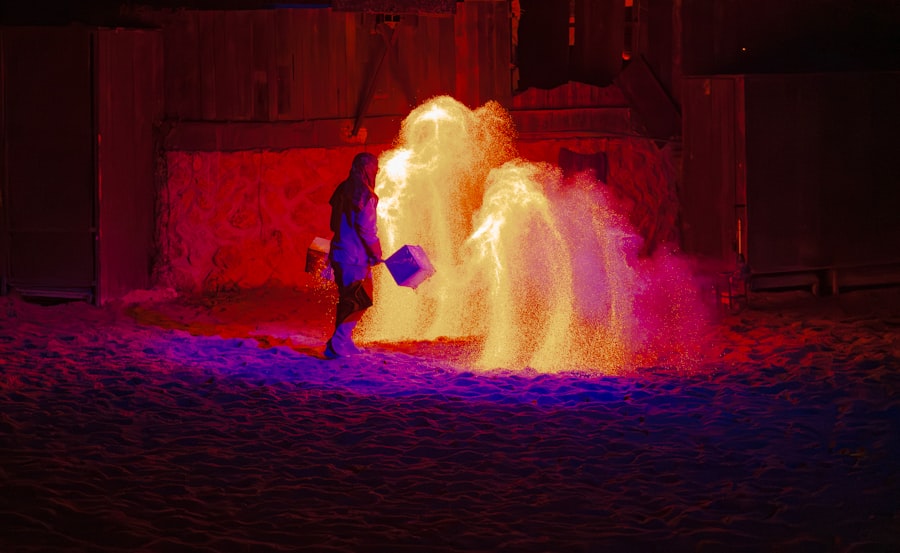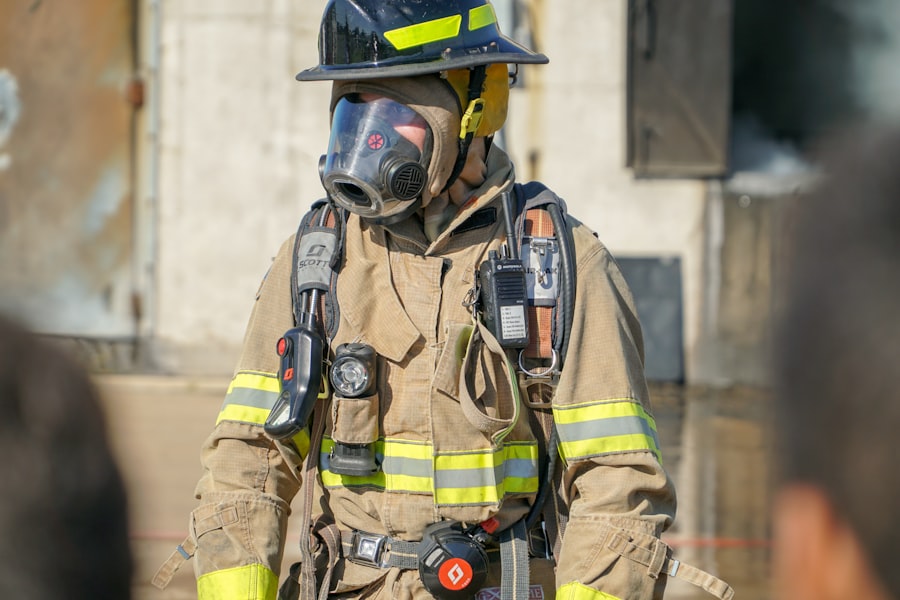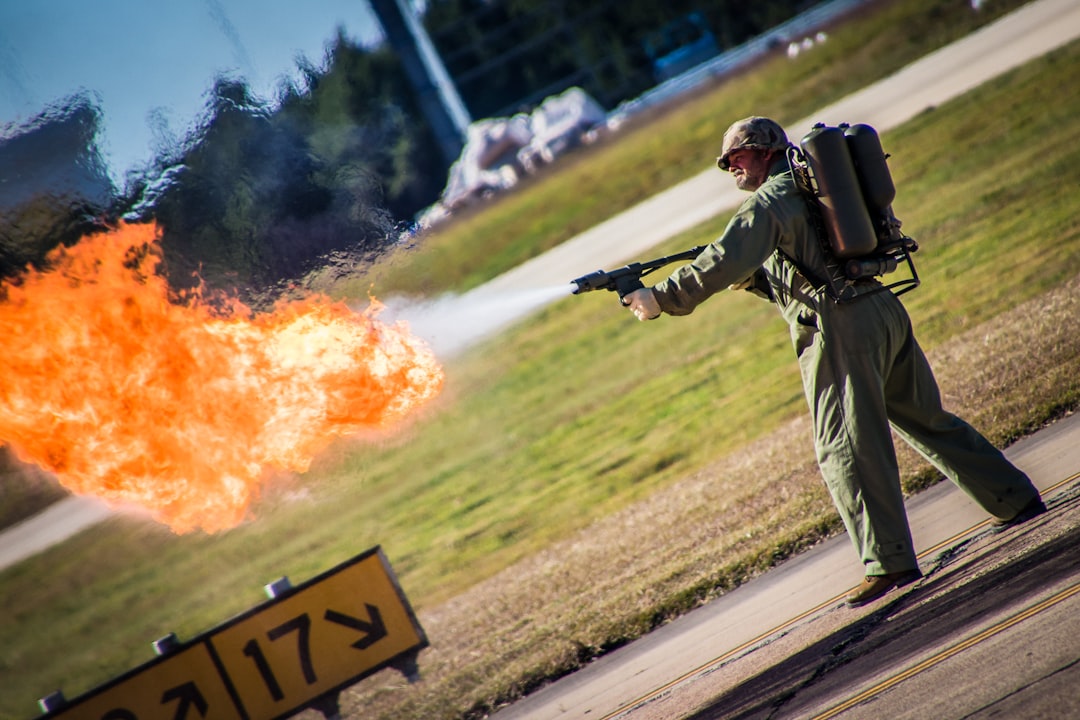Lithium metal fires present unique challenges that require a comprehensive understanding of their nature and behavior. Lithium, a highly reactive alkali metal, ignites spontaneously in air and reacts vigorously with water, producing flammable hydrogen gas. When lithium is involved in a fire, it can burn at extremely high temperatures, making it difficult to extinguish using conventional firefighting methods.
The combustion of lithium can lead to intense flames and the release of toxic fumes, posing significant risks to both individuals and the environment. Understanding these characteristics is crucial for anyone involved in handling or storing lithium, as it informs the necessary precautions and responses to potential incidents. Moreover, the increasing use of lithium in batteries and other applications has heightened the importance of recognizing the hazards associated with lithium metal fires.
As industries continue to adopt lithium-based technologies, the likelihood of encountering such fires has escalated. This necessitates a proactive approach to fire safety, emphasizing the need for specialized knowledge and training. By comprehensively understanding the properties of lithium and the dynamics of its combustion, individuals can better prepare for emergencies and implement effective safety measures.
Key Takeaways
- Lithium metal fires require specialized Class D fire extinguishing agents for effective suppression.
- Proper storage, handling, and regular maintenance of Class D agents are crucial for readiness.
- Training personnel and collaborating with emergency responders enhance fire management capabilities.
- Implementing safety protocols and using appropriate PPE reduce risks during fire incidents.
- Continuous improvement and adaptation to new technologies ensure up-to-date fire safety measures.
The Importance of Using Class D Agents
When it comes to extinguishing lithium metal fires, the use of Class D fire extinguishing agents is paramount. Class D agents are specifically designed to combat fires involving combustible metals, including lithium, magnesium, and sodium. Unlike conventional extinguishing agents such as water or foam, which can exacerbate metal fires by reacting with the burning material, Class D agents work by smothering the flames and preventing oxygen from reaching the burning metal.
This unique capability makes them indispensable in managing lithium fires effectively. The significance of using Class D agents cannot be overstated. Inappropriate firefighting methods can lead to catastrophic outcomes, including explosions and the rapid spread of fire.
By utilizing Class D agents, responders can contain and extinguish lithium fires safely, minimizing damage and reducing risks to personnel. Furthermore, these agents are formulated to withstand the extreme temperatures generated by metal fires, ensuring that they remain effective even in the most challenging conditions. As such, understanding the role of Class D agents is essential for anyone involved in fire safety and emergency response.
Identifying Suitable Class D Agents for Lithium Metal Fires

Identifying suitable Class D agents for lithium metal fires involves a careful evaluation of available options and their effectiveness in combating such incidents. Common Class D agents include dry powder extinguishing agents like sodium chloride, graphite powder, and copper powder. Each of these agents has unique properties that make them effective against lithium fires.
For instance, sodium chloride works by forming a crust over the burning metal, effectively isolating it from oxygen and preventing further combustion. In addition to sodium chloride, other agents like graphite powder are also effective due to their ability to absorb heat and create a barrier between the burning material and the surrounding environment. Copper powder, on the other hand, can help cool down the fire while simultaneously smothering it.
Therefore, responders must be well-versed in the characteristics of these agents to select the most appropriate one for a given situation.
Proper Storage and Handling of Class D Agents
| Parameter | Recommended Practice | Measurement/Metric | Frequency | Notes |
|---|---|---|---|---|
| Storage Temperature | Maintain between 15°C and 25°C | Temperature in °C | Daily | Use calibrated thermometers in storage area |
| Humidity Level | Keep relative humidity below 60% | Relative Humidity (%) | Weekly | Prevents degradation of agents |
| Container Integrity | Inspect for leaks, corrosion, or damage | Visual Inspection Report | Monthly | Replace damaged containers immediately |
| Labeling | Ensure clear, legible, and accurate labels | Label Compliance (%) | Monthly | Labels must include hazard info and handling instructions |
| Access Control | Restrict access to authorized personnel only | Access Log Entries | Continuous | Maintain log of personnel entry and exit |
| Spill Response Equipment | Ensure availability and functionality | Equipment Readiness Check (%) | Monthly | Includes absorbents, neutralizers, PPE |
| Training | Conduct handling and safety training | Training Completion Rate (%) | Annually | Document attendance and competency |
| Disposal Procedures | Follow approved disposal protocols | Compliance Rate (%) | Quarterly | Ensure environmentally safe disposal |
Proper storage and handling of Class D agents are critical components in ensuring their effectiveness during emergencies involving lithium metal fires. These agents must be stored in designated areas that are easily accessible yet away from potential ignition sources or incompatible materials. It is essential to maintain a clean and organized storage environment to prevent contamination or degradation of the agents.
Regular inspections should be conducted to ensure that containers are intact and that the agents remain in good condition. Handling Class D agents requires specific precautions to ensure safety and efficacy. Personnel must be trained in the proper techniques for deploying these agents during a fire emergency.
This includes understanding how to use extinguishers effectively and knowing when to apply them based on the nature of the fire. Additionally, responders should be aware of any potential hazards associated with handling these materials, such as inhalation risks or skin contact. By adhering to proper storage and handling protocols, organizations can enhance their preparedness for lithium metal fire incidents.
Training and Education for Managing Lithium Metal Fires
Training and education play a pivotal role in effectively managing lithium metal fires. Individuals who work with or around lithium must receive comprehensive training that covers not only the properties of lithium but also the specific risks associated with its combustion. This training should include practical exercises that simulate real-life scenarios involving lithium fires, allowing personnel to practice deploying Class D agents under controlled conditions.
Furthermore, ongoing education is essential as technologies and best practices evolve. Regular refresher courses can help ensure that personnel remain up-to-date on the latest firefighting techniques and safety protocols. Organizations should also consider incorporating scenario-based training that emphasizes teamwork and communication during emergencies.
By fostering a culture of continuous learning, organizations can enhance their overall readiness to respond effectively to lithium metal fires.
Implementing Safety Protocols and Procedures

Implementing robust safety protocols and procedures is vital for minimizing risks associated with lithium metal fires. Organizations should develop comprehensive fire safety plans that outline specific steps to take in the event of a lithium fire. These plans should include clear guidelines for identifying potential hazards, responding to incidents, and utilizing appropriate firefighting agents.
In addition to emergency response plans, organizations should establish preventive measures aimed at reducing the likelihood of lithium fires occurring in the first place. This may involve conducting regular risk assessments to identify potential ignition sources or unsafe practices within the workplace. By proactively addressing these issues through well-defined protocols, organizations can create a safer environment for employees while also ensuring compliance with relevant regulations.
Conducting Regular Inspections and Maintenance
Regular inspections and maintenance are essential components of an effective fire safety strategy concerning lithium metal fires. Organizations should establish a routine schedule for inspecting fire safety equipment, including Class D extinguishers and other firefighting tools specifically designed for metal fires. These inspections should assess not only the physical condition of the equipment but also its accessibility and readiness for use in an emergency.
In addition to equipment inspections, organizations should also evaluate their storage areas for Class D agents regularly. Ensuring that these materials are stored correctly and remain uncontaminated is crucial for maintaining their effectiveness during a fire incident. By prioritizing regular inspections and maintenance activities, organizations can significantly enhance their preparedness for managing lithium metal fires while also fostering a culture of safety within their operations.
Collaboration with Emergency Response Teams
Collaboration with emergency response teams is an integral aspect of effectively managing lithium metal fires. Organizations should establish strong relationships with local fire departments and emergency services that have experience dealing with hazardous materials. This collaboration can facilitate better communication during emergencies and ensure that responders are familiar with the specific risks associated with lithium fires.
Additionally, organizations can benefit from participating in joint training exercises with emergency response teams. These exercises provide an opportunity for both parties to practice coordinated responses to lithium fire incidents while also sharing valuable insights into best practices for managing such emergencies. By fostering collaboration between internal teams and external responders, organizations can enhance their overall preparedness for dealing with lithium metal fires.
Establishing Emergency Response Plans
Establishing comprehensive emergency response plans is crucial for effectively managing incidents involving lithium metal fires. These plans should outline clear roles and responsibilities for personnel during an emergency, ensuring that everyone understands their specific tasks in responding to a fire incident. Additionally, response plans should include detailed procedures for evacuating personnel safely from affected areas while minimizing exposure to hazardous materials.
Moreover, organizations should regularly review and update their emergency response plans to reflect changes in operations or personnel. Conducting drills based on these plans can help reinforce training while also identifying areas for improvement in response strategies. By maintaining well-defined emergency response plans, organizations can significantly enhance their ability to manage lithium metal fires effectively while ensuring the safety of all individuals involved.
Utilizing Personal Protective Equipment (PPE)
Utilizing personal protective equipment (PPE) is essential when responding to lithium metal fires or working in environments where such hazards exist. PPE serves as a critical line of defense against potential injuries caused by exposure to flames, toxic fumes, or hazardous materials associated with lithium combustion. Fire-resistant clothing, gloves, goggles, and respiratory protection are all vital components of an effective PPE strategy.
Organizations must ensure that personnel are adequately trained in selecting and using appropriate PPE based on specific risks associated with lithium metal fires. Regular inspections of PPE should also be conducted to ensure that equipment remains in good condition and provides adequate protection during emergencies. By prioritizing PPE usage as part of their safety protocols, organizations can significantly reduce the risk of injury while enhancing overall preparedness for managing lithium metal fires.
Continuous Improvement and Adaptation to New Technologies
Continuous improvement is essential in adapting to new technologies related to fire safety management concerning lithium metal fires. As industries evolve and new materials are developed, organizations must remain vigilant in updating their practices to incorporate advancements in firefighting techniques and equipment. This may involve investing in research on innovative Class D agents or exploring new firefighting technologies designed specifically for combustible metals.
Additionally, organizations should actively seek feedback from personnel involved in fire response efforts to identify areas where improvements can be made. By fostering a culture of innovation and adaptability within their operations, organizations can enhance their overall effectiveness in managing lithium metal fires while ensuring compliance with evolving safety standards. Embracing continuous improvement not only strengthens an organization’s fire safety protocols but also contributes to a safer working environment for all employees involved in handling or storing lithium materials.
In conclusion, managing lithium metal fires requires a multifaceted approach that encompasses understanding the nature of these fires, utilizing appropriate firefighting agents, implementing robust safety protocols, conducting regular training, collaborating with emergency responders, establishing comprehensive emergency plans, utilizing personal protective equipment (PPE), and committing to continuous improvement through adaptation to new technologies. By prioritizing these elements within their operations, organizations can significantly enhance their preparedness for dealing with lithium metal fires while ensuring the safety of all personnel involved.
Lithium metal fires are classified as Class D fires, which require specific extinguishing agents designed for combustible metals. For more information on the appropriate fire suppression methods and safety measures, you can refer to the article on fire safety protocols at freakyscience.
com/sample-page/’>Freaky Science. Understanding the unique properties of lithium and the correct response to its fires is crucial for effective management and safety in environments where lithium is present.
WATCH THIS 🔒 The 5 Materials So Dangerous They’re Locked in Nuclear Bunkers
FAQs
What is a lithium metal fire?
A lithium metal fire is a type of fire involving lithium metal, which is highly reactive and can ignite spontaneously when exposed to air or water. These fires are classified as Class D fires, which involve combustible metals.
Why are lithium metal fires classified as Class D fires?
Class D fires involve combustible metals such as lithium, magnesium, sodium, and potassium. Lithium metal fires fall under this category because lithium is a reactive metal that burns at high temperatures and requires special extinguishing agents.
What makes lithium metal fires dangerous?
Lithium metal fires are dangerous because lithium reacts violently with water and moisture, producing flammable hydrogen gas and heat, which can cause explosions or intensify the fire. Additionally, lithium burns at very high temperatures, making it difficult to extinguish.
What is a Class D fire extinguisher agent?
A Class D fire extinguisher agent is a specialized extinguishing material designed to safely put out fires involving combustible metals. These agents work by smothering the fire, absorbing heat, and preventing the metal from reacting with oxygen or moisture.
What types of agents are used to extinguish lithium metal fires?
Common Class D fire extinguishing agents for lithium metal fires include dry powder agents such as sodium chloride (NaCl) or copper-based powders. These agents help to isolate the burning metal from oxygen and absorb heat, effectively suppressing the fire.
Can water be used to extinguish lithium metal fires?
No, water should never be used to extinguish lithium metal fires. Water reacts violently with lithium, producing hydrogen gas and heat, which can cause explosions and worsen the fire.
How should one respond to a lithium metal fire?
In the event of a lithium metal fire, use a Class D fire extinguisher with an appropriate dry powder agent. Evacuate the area if the fire is large or uncontrollable, and call emergency services. Avoid using water or standard fire extinguishers.
Where are lithium metal fires most likely to occur?
Lithium metal fires are most likely to occur in laboratories, manufacturing facilities, or storage areas where lithium metal is handled or stored. They can also occur in battery manufacturing or recycling plants.
Are lithium-ion battery fires the same as lithium metal fires?
No, lithium-ion battery fires are different from lithium metal fires. Lithium-ion batteries contain lithium compounds but not metallic lithium. They are typically Class B or Class C fires and require different extinguishing methods.
What safety precautions should be taken when handling lithium metal?
When handling lithium metal, use protective equipment, store it in airtight containers under inert atmospheres or mineral oil, keep it away from moisture and incompatible materials, and have Class D fire extinguishing agents readily available.
